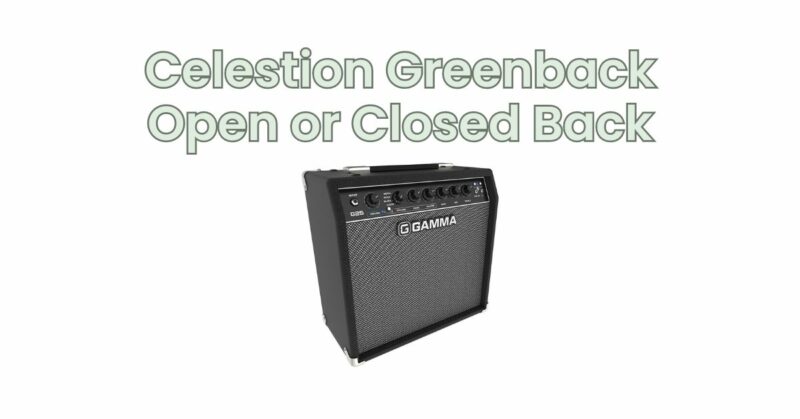The Celestion Greenback is an iconic guitar speaker known for its rich, warm tone and versatile sound. When it comes to choosing between open-back and closed-back configurations for the Celestion Greenback, guitarists often find themselves weighing the pros and cons of each setup. In this article, we will delve into the considerations of using the Celestion Greenback in both open-back and closed-back configurations, helping you understand their impact on sound projection and tonal characteristics.
Open-Back Configuration: The open-back configuration allows sound waves to disperse freely from both the front and the back of the speaker cone. Here are some key points to consider regarding the open-back setup with Celestion Greenback:
- Wider Sound Dispersion: The open-back configuration provides a wider sound dispersion, allowing the sound to spread more freely throughout the room or stage. This wider dispersion can contribute to a more immersive and natural listening experience, particularly in larger spaces or when playing in an ensemble.
- Enhanced Ambient Presence: With an open-back setup, the Greenback can generate a sense of ambient presence as the sound waves from the back of the speaker blend with the surrounding environment. This characteristic can add depth and a natural quality to the overall sound, creating a more spacious and live-like feel.
- Balanced Frequency Response: The open-back design tends to result in a more balanced frequency response across the entire spectrum. The dispersion of sound waves from the back of the speaker can contribute to a smoother and more even tonal representation, allowing for a balanced reproduction of both low and high frequencies.
Closed-Back Configuration: The closed-back configuration features an enclosed rear chamber behind the speaker, preventing sound waves from escaping through the back. Here’s what you need to know about using the Celestion Greenback in a closed-back setup:
- Tighter Bass Response: The closed-back configuration provides a tighter and more focused bass response. The sealed enclosure restricts the movement of air behind the speaker cone, resulting in improved low-end control and definition. This can be particularly desirable for genres where precise bass reproduction and tight low-end response are key, such as rock and metal.
- Direct Sound Projection: With a closed-back setup, the sound waves are directed primarily towards the front of the speaker, offering a more direct and focused sound projection. This can be advantageous when you want to concentrate the sound towards your listening position or when you need more localized sound on stage.
- Increased Power Handling: Closed-back configurations often provide better power handling capabilities compared to open-back setups. The sealed enclosure allows for greater pressure buildup, enabling the speaker to handle higher power levels without distortion or damage.
Conclusion: When it comes to choosing between an open-back or closed-back configuration for the Celestion Greenback, it ultimately depends on your playing style, tonal preferences, and the specific context of your musical applications. The open-back configuration offers wider sound dispersion, enhanced ambient presence, and balanced frequency response, making it suitable for immersive and natural sound experiences. On the other hand, the closed-back configuration provides tighter bass response, direct sound projection, and increased power handling, making it ideal for genres that demand precise low-end control and focused sound projection. Experimentation and personal preference play a significant role in determining which configuration best complements your playing style and musical goals. Whether you choose open or closed back, the Celestion Greenback is renowned for its distinctive tone and remains a popular choice among guitarists worldwide.

